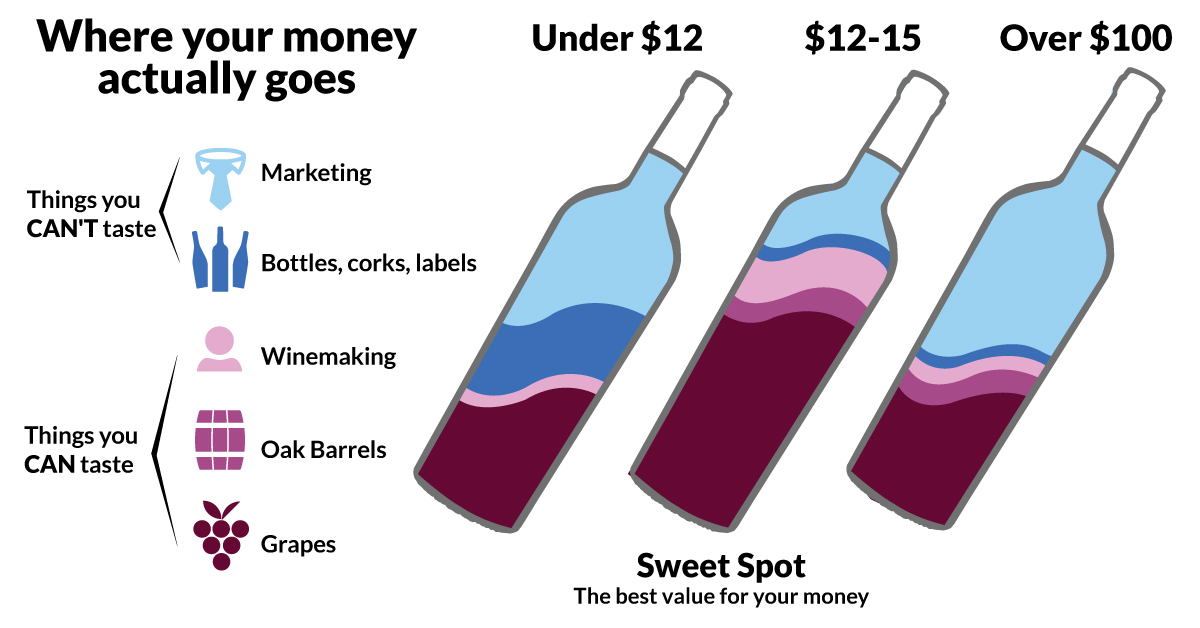Chardonnay: The complete guide
Everything you need to know about Chardonnay, from flavors to food pairings. Get answers to the “basic” wine questions you’ve always wondered about.
What is Chardonnay?
Chardonnay is a green grape that makes one of the world’s most popular white wines. In fact, Chardonnay might just be the most famous wine out there. There’s mystery around its origins — some say its roots are in the Middle East, others give it to the Balkans — but it found its home in Burgundy, France, in the Middle Ages and has flourished there ever since.
Loved for its hardiness and versatility, winemakers have taken it around the world with them. It’s adapted to diverse climates from California to Australia, both of which are now noted for their Chardonnay, alongside Chile and South Africa.
Chardonnay tends to fall into two categories: oaked, like traditional Burgundy Chardonnay and unoaked, such as Chablis. Chardonnay is also a key ingredient in sparkling wines like Champagne.
What’s the best food pairing for Chardonnay?
Being so versatile, Chardonnay pairs well with a multitude of dishes. The wine hack is to match the weight or body of the wine to the weight of your meal, in other words richer Chardonnays go well with richer dishes.
Oaked Chardonnays can therefore handle bolder flavors like grilled salmon, roasted chicken and pasta in creamy sauces. Their subtle tannins — the properties in wine that create a drying sensation on the tongue — mean these also work well with anything smoky or savory.
Crisp, unoaked Chardonnays are better with lighter stuff like seafood, salads and milder cheeses like goat cheese. Their high acidity can cut through fattier foods too.
What does Chardonnay taste like?
There are many different Chardonnays out there — it’s a chameleon and can change depending on where it’s grown and how it’s made. That said, Chardonnay tends to fall into two groups: unoaked and oaked.
Unoaked Chardonnay like Chablis is aged in stainless steel tanks and is usually light and crisp. You’re likely to find flavors including apple, pear and citrus alongside chalkiness or minerality — a refreshing sensation reminiscent of wet stones.
Oaked Chardonnay is aged in oak barrels which load it with vanilla, butter, toasted nuts, and baking spices. The wine is usually fuller-bodied — in other words it feels richer in your mouth — and creamier in texture due to the specific fermentation process it goes through (called Malolactic fermentation).
Climate plays a big role too: cooler climates make more tart Chardonnays, heavier on citrus and green fruits. Warmer climate Chardonnays give you riper fruit flavors, like pineapple or mango.

You have $100 off your first order
Chardonnay vs Sauvignon Blanc
These two iconic white wines often appear alongside one another on a wine list. If you ever find yourself torn between the two, here’s what you need to know.
Fruit flavors: With Chardonnay you typically get citrus fruit flavors like lemon, as well as apple and pear, while Sauvignon is loaded with green fruits such as grapefruit and gooseberry.
Savory flavors: Sauvignon has herbaceous notes — think grass or bell pepper — but Chardonnay, if aged in oak, offers richer flavors of vanilla, butter, and baking spices.
Body: Oaked Chardonnays tend to be fuller-bodied and creamier in texture compared to Sauvignon’s light body and freshness from its high acidity.
What are good alternatives to Chardonnay?
Being such a chameleon, there’s probably a Chardonnay out there to suit pretty much any palate. But if you want to look beyond this superstar grape, try these alternatives:
Viognier: Like Chardonnay it’s fuller-bodied and typically aged in oak, giving it that creamy texture. However it’s more likely to feature peach or apricot on the fruit side.
Chenin Blanc: A favorite in South Africa, this gives you the same hit of apple and citrus zest that Chablis delivers.
Albariño: Another crisp, light and refreshing wine for anyone that loves unoaked Chardonnay. This one often comes with a hint of saltiness too.
Which winemaking regions make Chardonnay?
Chardonnay is grown all over the world but a few winemaking regions have made a name for themselves with knock-out Chardonnays. In Burgundy, France, the spiritual home of the grape, you’ll find everything from vibrant acidic Chardonnays to richer, oak-aged ones, and the more flinty Chablis. In the USA, the warmer parts of California make tropical, buttery Chardonnays, while on the Pacific Coast, Chardonnay tends to be fresher. Australia’s go-to destinations for Chardonnay include the Yarra Valley and Margaret River.



